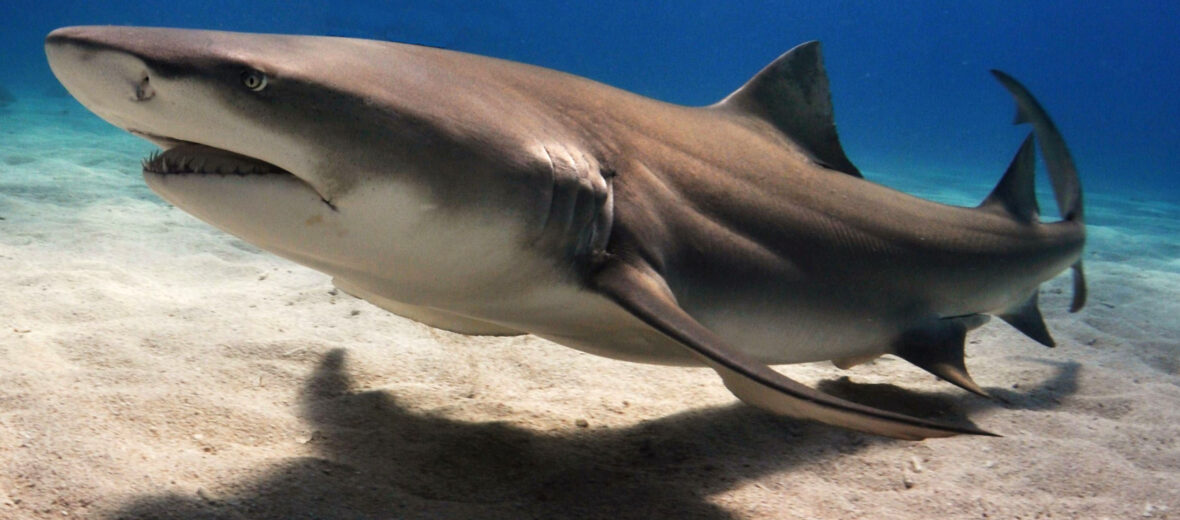
So named for the yellowish color of its skin. The lemon shark can be found in the Atlantic and Pacific Oceans off the coasts of North America, South America, and Africa. They prefer warm, shallow water; typically near coral reefs, mangroves, bays, and even in the mouths of rivers. Lemon sharks are also part of the requiem (a migratory, live bearing shark that lives in warm seas) shark family that can even survive short stints in brackish water. Due to overfishing (for their meat and fins), habitat destruction (destruction of mangroves for useless purposes like golf courses), and pollution, these sharks are listed as Vulnerable by the IUCN. Their numbers are also decreasing.
First the Stats…
Scientific name: Negaprion brevirostris
Weight: Up to 12 feet
Length: Up to 551 lbs.
Lifespan: Up to 27 years
Now on to the Facts!
1.) Like many other sharks, lemons possess electroreceptors in their head that detect even the faintest electromagnetic impulses from passing prey. They pick up on these impulses and can locate prey, even in darker waters.
2.) Due to a horizontal bend in their retina, they are also afforded with keen eyesight.
3.) Fish, rays, crustaceans, seabirds, and even other sharks – including each other, are all on the menu.
4.) Even though these sharks are social and prefer dwelling in groups, for safety, this comes at a cost. When in groups, food becomes more of a challenge to acquire and disease transmission is higher.
5.) Being shallow water sharks, they can be found at depths of up to 300 feet.
But wait, there’s more on the lemon shark!
6.) Another unique feature of lemon sharks is the fact that they have 2 dorsal fins of nearly equal size.
7.) Females are placentally viviparous (embryos develop inside mom and the pups are born live – not from external eggs).
Did you know…?
According to the International Shark Attack File, there have only been 10 recorded, unprovoked lemon shark attacks on humans over the years and none of those were fatal.
8.) Mangrove-rich estuaries are a common birthing place for these sharks. The water is warmer, the current weaker, and the environment is safer.
9.) A female lemon shark will undergo up to a 12 month gestation (pregnancy) and produce up to 17 pups.
10.) Lemon sharks are hunted both for recreational purposes as well as commercially. They are also sadly the victims of mass finning for shark fin soup. This has put a huge dent in their overall numbers.
Now a Short Lemon Shark Video!
Be sure to share & comment below! Also, check out the Critter Science YouTube channel. Videos added frequently!
Want to suggest a critter for me to write about? Let me know here.




I love lemon sharks.